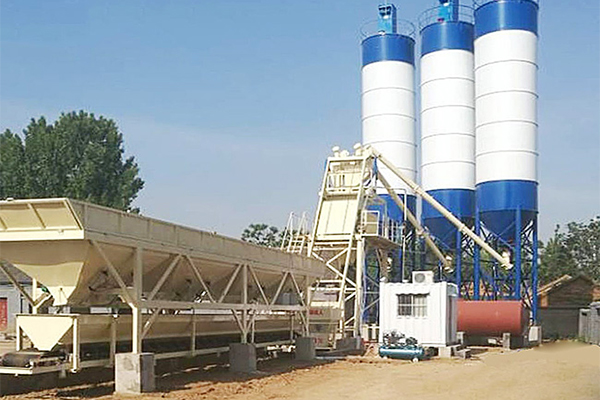Depending on the aggregate conveying device, there are bucket type concrete batching plant and belt type concrete batching plant. The models are HZS25, hzs35, HZS50, hzs60 are bucket mixing stations, the models are HZS75, hzs90, HZS120, and HZS180 are belt mixing stations. Both the bucket type and the belt type have their advantages and disadvantages.
The hoisting bucket is applied with a brake hoist and is towed by a pulley block and a wire rope to achieve the purpose of lifting the hopper. In large and medium-sized concrete batching plants, double-wire rope transmission is often adopted; in small-sized concrete plants, most are directly suspended by single rope transmission or single rope transmission guided by moving pulleys on the hopper. It is more suitable for small mixing plants with a production capacity below 75 cubic meters per hour. The bucket type mixing station has the advantages of small flooring area, simple structure, and low cost. The disadvantage is that it is not as efficient as a belt type concrete batching plant.

For belt type concrete batching plants, there are aggregate belt conveyors. Models include hzs60, hzs90, hzs120 and hzs180. Take the hzs90 concrete batching plant for example. The belts are connected in a closed loop, and they are tensioned with a tensioning device. Driven by the motor, the belt is continuously operated by the friction between the belt and the driving roller, so that the aggregate is transported from the loading end to the unload Purpose. The advantages of belt conveying are the large conveying distance, high efficiency, and low failure rate; the tensioning device makes the belt have enough tension to ensure that friction between the belt and the drive roller is generated so that the belt does not slip, and the length of the belt can be adjusted The impact of changes; the hood mainly plays the role of dust and rain. It is suitable for horizontal transportation and inclined transportation, and is widely used in the construction of large-scale commercial mixing stations. The weighed aggregate is transferred to the transition hopper by a belt conveyor.